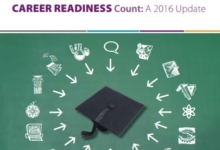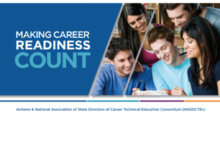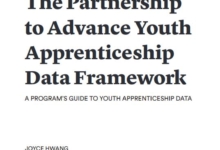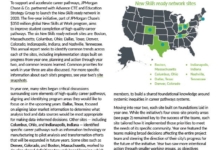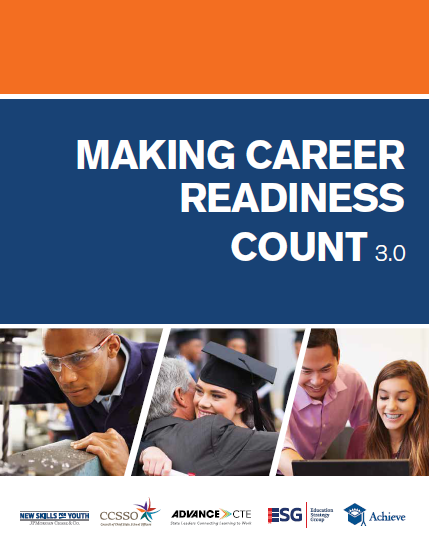The third edition of the Making Career Readiness Count report – which was developed by Advance CTE, Achieve, Education Strategy Group and the Council of Chief State School Officers through the New Skills for Youth initiative – examines how states are measuring college and career readiness in their state and federal accountability systems. The number of states measuring career readiness has more than doubled since 2014. This trend demonstrates a widespread commitment to valuing career readiness in high school, fueled by the recognition that students need postsecondary preparation in order to be economically successful and accelerated by new flexibility in the Every Student Succeeds Act (ESSA).
The report uses four categories of college and career readiness (based on an expert workgroup and outlined in the report Destination Known: Valuing College AND Career Readiness in State Accountability Systems):
- Progress Toward Post-High School Credential
- Co-Curricular Learning and Leadership Experiences
- Assessment of Readiness
- Transitions Beyond High School
Overall, the most common measure used across the states is Assessment of Readiness, with thirty states and the District of Columbia valuing experiences that are aligned with the Destination Known recommendations. But with all of the progress states have made, there is still room to strengthen and improve measures of career readiness.
Making Career Readiness Count 3.0 is made possible through the New Skills for Youth initiative, a partnership of the Council of Chief State School Officers, Advance CTE and Education Strategy Group, generously funded by JPMorgan Chase & Co. Past editions of the report are available here.

